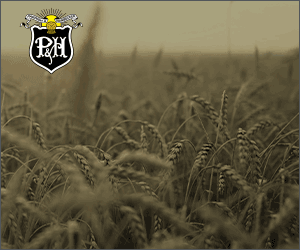Market review
A 2016-17 PRICE ANALYSIS

THE LOW CANADIAN dollar, big crops in the U.S., and summertime volatility were among the factors that shaped prices for corn, soybean, and wheat crops in Ontario in the last marketing year. Data compiled by Farm Market News at the University of Guelph Ridgetown Campus showed that the basis levels were once again buoyed by the exchange rate. Soybean prices, helped by strong world demand, fared better than corn and wheat prices.
SOYBEANS
Soybean prices for both Ontario and Chicago during the marketing year performed better than the previous year. The average Chatham-Kent (CK) high cash price was $12.37, which was slightly above the 2015 — 2016 average of $12.08 and 75 cents below the previous five-year average of $13.12.
In Chicago, the average old crop price was $9.84, which was 35 cents higher than the previous year’s mark of $9.49. The Chicago price, however, was well below the previous five-year average of $12.12. Once again, the lower Canadian dollar helped to prop up the Ontario prices. The high average basis in 2016 – 2017 was $2.53. Although this mark was slightly lower than the previous year’s average of $2.59, it was well above the previous five-year average of approximately $1. The average exchange rate of $1.32 was close to the previous year’s average of $1.33. The average exchange for the previous five years was $1.13.
CORN
The average corn price did not fare as well as the previous year and was almost $1 behind the previous five-year average. For CK, the high average price in 2016 — 2017 was $4.39, which was approximately 20 cents lower than the $4.58 average in 2015 — 2016. The difference was a reversal of sorts as the CK average in 2014 — 2015 was also $4.39. The previous five-year average was $5.23.
In Chicago, the average old crop future price was $3.61, which was lower than the previous year’s mark of $3.70. Corn prices have been grinding lower as the trade has been dealing with large U.S. corn crops in recent years. While the average Chicago price was $3.75 in 2014 – 2015, the previous five-year average topped the $5 level at $5.02.
WHEAT
The average Chicago cash price for wheat in 2016 — 2017 was $4.30, which was lower than the 2015 — 2016 average of $4.77, and the previous five-year average of $6.16. As for local prices, the average Grain Farmers of Ontario cash price for Soft Red Winter Wheat came in at $5. This price was down from the previous year’s mark of $5.81 and lower than the five-year average of $6.34.
For Soft White Winter Wheat, the average cash price was $4.98 in 2016 — 2017, which was well below the averages for 2015 — 2016 ($7.93) and the previous five years ($7.03).
The average price for Hard Red Winter during the last marketing year was $4.94. In 2015 — 2016, it was $5.90. The previous five-year average was $6.76. For Hard Spring, the average cash price was $5.98. As the Minneapolis Grain Exchange is used for Hard Red Spring pricing, a big rally in that market helped to push the price above the 2015 — 2016 mark of $5.93. The previous five-year average was $6.96.
SEASONAL VOLATILITY
As Canada was celebrating its 150th anniversary in 2017, there were plenty of fireworks in the grain markets around Canada Day. Some of the biggest gains in the market were made just before Canada’s big celebration on July 1. On June 30, the old crop wheat future in Chicago closed 30 cents higher. Soybeans were not far behind, gaining 26 cents. The old crop corn future made a healthy gain of 11.5 cents. The gains on June 30 came in the wake of the highly anticipated acreage report that was released that day by the United States Department of Agriculture (USDA). Corn and wheat plantings were down. And although the acreage estimate for soybeans was seven per cent higher than 2016, the number was lower than the trade’s expectations.
In a stark reminder of seasonal volatility, the markets posted some of their sharpest losses two weeks later. Soybean prices plummeted 45 cents on July 13. On the same day, Chicago wheat was down 25 cents, and corn prices lost 16 cents. The heavy losses were attributed to the weather forecast for some beneficial rains and cooler temperatures in the hot U.S. Midwest. Another key report from the USDA also played a part. The July 12 World Agricultural Supply and Demand Estimates (WASDE) report was viewed as bearish, especially for corn, as the USDA raised its 2017 — 2018 production estimates for corn, soybeans, and wheat, and raised its guess for corn ending stocks. The negative sentiment resulted in another 16 cent loss for the nearby corn futures.
Blair Andrews is the editor of Farm Market News produced from the University of Guelph Ridgetown Campus. •












